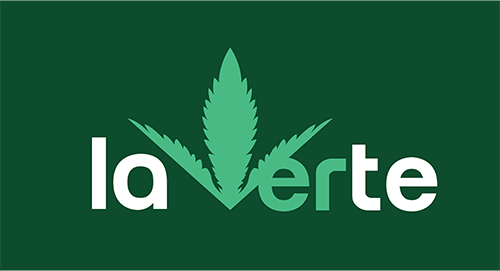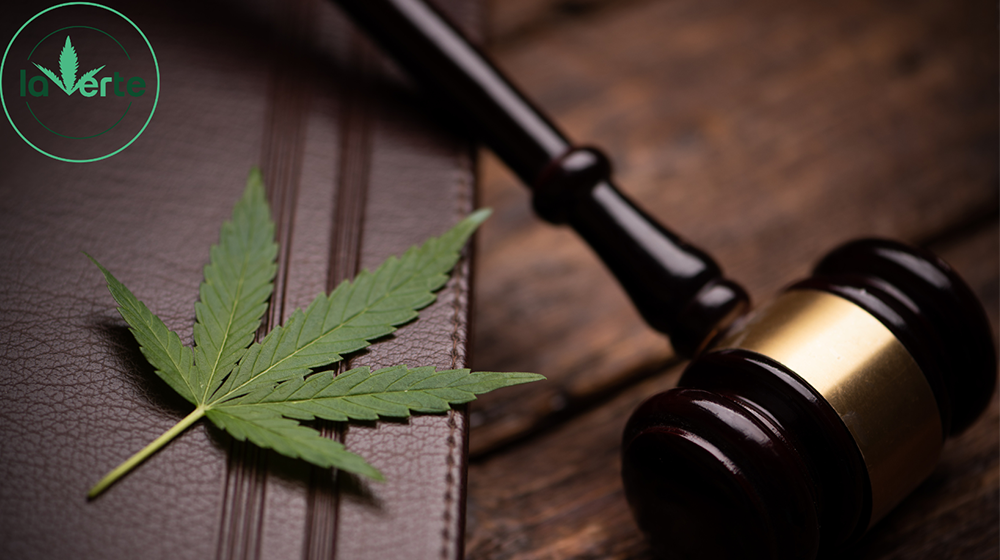Blog la Verte Shop
The latest laws and regulations on CBD
Quelle sont les dernières réglementations en date concernant l’usage du CBD ?
Depuis maintenant un an et demi et la date charnière du 24 Janvier 2022, la vente de CBD ainsi que sa consommation, sont officiellement autorisés, dans les taux autorisés par la CJUE (Cours de Justice de L’Union Européenne), c’est à dire 0,3% de THC dans les flowers or resins. However, we all know very well that this product, which is so appreciated and so beneficial to humans (it has been proven that cannabis flower is adapted to our organism), is still meticulously scrutinised by the authorities in charge, and is subject to a number of laws and regulations, which change regularly. Let's take a look at the latest laws and regulations on CBD.
THC levels authorised in flowers
Le taux actuel de THC (Δ-9-tétrahydrocannabinol) autorisé dans les fleurs de CBD varie d’un pays à l’autre. En Suisse voisine par exemple, la limite est de 1% maximum, mais la plupart des flowers grown indoors sont aux alentours de 0,6 ou 0,7% de THC. En Italie, ce taux peut être jusqu’à 0,5% de THC. Dans l’Union Européenne de manière générale. ce taux est de 0,3% de THC. Hormis quelques pays qui font leurs propres règles, comme l’Allemagne, ou le taux est de 0,2%, et dans un cas encore plus extrême, la Slovaquie, qui interdit totalement le CBD, la règle est donc aux 0,3% de THC. Bien que la différence soit minime, et que les fleurs dites « non-rabaissées » soient bien meilleures, c’est à dire plus florale, avec davantage d’odeur, un touché bien meilleur, et surtout beaucoup plus naturelles, car non passées à un processus de rabaissement, il faut suivre les lois en vigueur sur le taux à respecter.
Et d’ailleurs, comment réduire le taux de THC d’une fleur? Il existe plusieurs techniques, certaines plus « naturelles » que d’autre. La plus répandue, et la moins pire, est le rabaissement au CO2. En effet, la fleur est oxygénée, et avec ce processus, le taux peut être réduit de 0,7% à 0,3% par exemple. Les fleurs de CBD rabaissées au CO2 présentent une petite couche de pollen visible à l’œil nu. Cette méthode détériore malheureusement une grande partie des terpénoïdes et flavonoïdes présent au sein de celle ci, et c’est pourquoi il est généralement nécessaire de passer par une étape de terpenisation avant de la vendre au shop ou consommateur, pour qu’elle soit plus gustative et plaise au consommateur.
Vient ensuite la rabaissement au butane ou à l’ethanol. Ces techniques ne sont pas les meilleurs car elles peuvent laisser un goût étrange dans la fleur, et également un résidu d’alcool ou de solvant. C’est la raison pour laquelle cette technique est de moins en moins répandue. Chez The GreenWe make sure that the flowers are lowered in the best possible way, to avoid bad products. If you have any questions on this subject, please contact us at: [email protected]. La dernière technique, beaucoup plus artisanale et moins facile à contrôler, et le rabaissement naturel par la chaleur. Ce processus est également utilisé lorsqu’un consommateur souhaite décarboxyler ses fleurs pour les utiliser dans des plats ou des gâteaux et qu’il ne prend pas assez de précautions. Cette méthode participe également à dégrader les autres cannabinoïdes et les terpènes.
CBD and driving
En France, depuis le 21 Juin 2023 et une décision de la cour de cassation, il est strictement interdit de conduite après avoir consommé du CBD, même en faible quantité. Pourquoi? Car la tolérance zéro est appliquée dans l’hexagone. Cette décision fait grincer des dents, de plus qu’elle a été prise sans avoir au préalable demandé l’avis aux professionnels du CBD, ou même être passé par un vote. Sachant qu’il y a toujours un faible taux de THC dans les fleurs commercialisées en France, il est donc impossible de consommer du CBD, pourtant totalement légal en France, et être à 0% de THC dans l’organisme. Voici ce que le texte officiel indique (source: site service-public.fr):
A driver was found guilty of driving a vehicle while under the influence of narcotics and of speeding. He was sentenced by the criminal court to 2 months' suspended imprisonment, 6 months' suspension of his licence and a €50 fine.
The Court of Appeal acquitted him of the first offence on the grounds that the toxicology report did not mention the THC level in accordance with the decree of 13 December 2016 setting out the procedures for screening for substances indicating the use of narcotics. The Public Prosecutor of the Court of Appeal appealed to the Supreme Court on the basis of article L 235-1 of the Highway Code, which does not set any threshold. Furthermore, according to this magistrate, the decree sets a detection threshold and not an incrimination threshold.
La Cour de cassation casse l’arrêt et rappelle que l’article L 235-1 du code de la route incrimine le seul fait de conduire après avoir fait usage de stupéfiants, cet usage étant établi par une analyse sanguine ou salivaire. L’infraction est constituée s’il est établi que le prévenu a conduit un véhicule après avoir fait usage d’une substance classée comme stupéfiant (THC), peu important la dose absorbée.
Que pouvons-nous vous conseiller? Consommez vos fleurs de CBD, résines de CBD et huiles de CBD lorsque vous savez que vous ne prendrez pas le volant (exemple: le soir après être rentré chez vous). Si vous avez consommé du CBD et que vous êtes censé conduire, essayez de vous faire ramener chez vous, ou alors rester ou vous êtes, le temps que le peu de THC dans votre organisme disparaisse. Ce temps varie d’une personne à l’autre bien entendu, mais vous pouvez vous dire que cela prend de 3 à 8 heures, en fonction de votre consommation précédente.
Enfin, si jamais vous vous faites contrôler, et que vous pensez que votre niveau de THC est très faible, voir casi nul, il est important de demander une contre analyse de sang immédiate. Les forces de l’ordre vous conduiront donc à l’hôpital le plus proche, pour faire des analyses de sang, qui seront à votre charge. Si jamais le taux de THC est minime voir nul, il est possible que vous puissiez repartir au volant de votre véhicule, sans amende ni poursuites. Mais le conseil le plus important est de DO NOT DRIVE AFTER TAKING CBD in any form.
You can find our full range of indoor CBD flowers, CBD resins and CBD hash, CBD oils and accessories on our website: https://laverteshop.fr/

